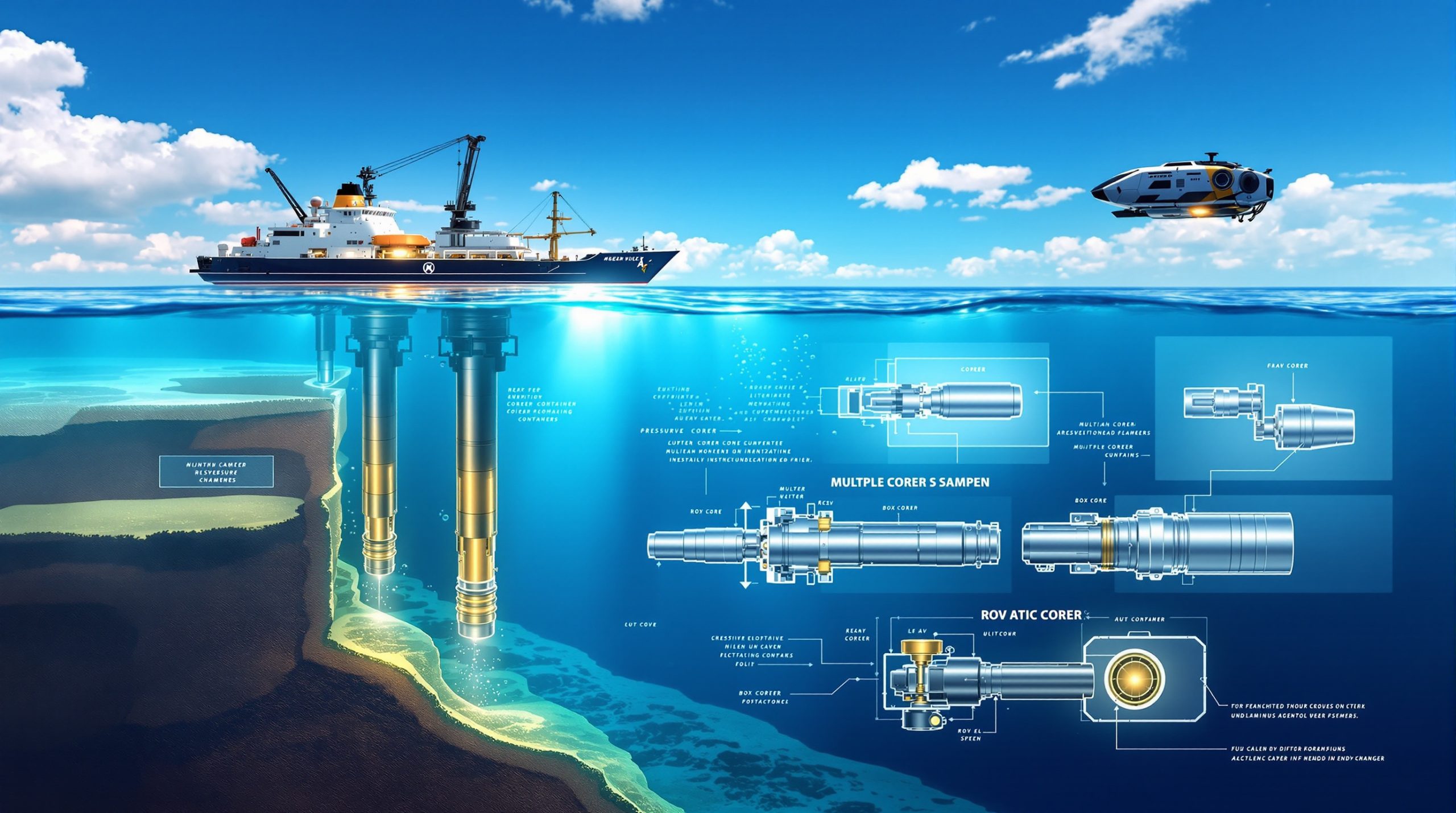How Has the Diavik Diamond Mine Achieved Environmental Excellence?
In a groundbreaking achievement for sustainable mining practices, the Diavik diamond mine in Canada's Arctic region has set new standards for environmental responsibility through innovative renewable energy integration. Operated by Rio Tinto, this remote diamond-producing facility has transformed industry expectations about what's possible in extreme environments, earning prestigious recognition for its forward-thinking approach.
The mine's environmental excellence stems from a comprehensive sustainability strategy that combines cutting-edge technology with practical solutions designed specifically for Arctic conditions. By tackling the challenge of powering remote operations with renewable energy, Diavik demonstrates how the mining sector can meaningfully reduce its environmental footprint while maintaining operational efficiency.
Quantitative Elements
The cornerstone of Diavik's environmental achievement is its record-breaking 3.5-megawatt solar installation featuring 6,620 bi-facial panels. This remarkable facility—the largest off-grid solar installation in Canada—generates approximately 4.2 million kilowatt-hours of electricity annually, capable of supplying up to 25% of the site's power needs during its upcoming closure phase.
This substantial renewable energy capacity translates to significant environmental benefits, including:
- Reduction of carbon emissions by approximately 2,900 tonnes annually
- Decrease in diesel consumption by approximately 1.1 million liters per year
- Elimination of emissions equivalent to removing 630 gasoline-powered vehicles from circulation
- Reduced fuel transportation requirements in logistically challenging Arctic conditions
Qualitative Elements
"This recognition reflects our commitment to environmental responsibility and collaboration with our partners," notes Matthew Breen, Diavik's Chief Operating Officer, highlighting the mine's dedication to sustainability beyond regulatory requirements.
The project's success also demonstrates the effectiveness of industry-community partnerships. By working with Yukon-based contractor Solvest and the Tłı̨chǫ Investment Corporation, Diavik ensured local expertise and Indigenous participation were central to the project's implementation and success.
The mine's environmental excellence has been formally recognized through the prestigious Towards Sustainable Mining (TSM) Environmental Excellence Award, establishing Diavik as a leader in sustainable mining practices within Canada's resource sector.
What Makes Diavik's Solar Installation Groundbreaking?
Record-Breaking Off-Grid Solar System
The scale of Diavik's solar installation sets it apart as a pioneering achievement in renewable energy implementation. With 3.5 megawatts of capacity across 6,620 bi-facial panels, this facility represents the largest off-grid solar system in Canada and one of the most significant in any mining operation globally.
The system's impressive output—4.2 million kilowatt-hours annually—demonstrates that renewable energy can be deployed at scale even in the most challenging environments. This output provides a substantial portion of the mine's electricity needs, proving that solar power can be a viable component of the energy mix for resource operations in remote locations.
What makes this achievement particularly noteworthy is that it comes in one of the world's most extreme environments, where traditional wisdom might suggest solar power would be impractical due to harsh weather conditions and seasonal daylight variations.
Innovative Cold-Climate Engineering
The engineering behind Diavik's solar installation represents a masterclass in cold-climate renewable energy solutions. The system leverages several technological innovations specifically adapted for Arctic conditions:
Temperature-Enhanced Performance: Unlike conventional solar panels that lose efficiency in cold weather, the specialized panels at Diavik actually increase output by approximately 15% at -25°C compared to +25°C, turning the Arctic's extreme cold into an advantage rather than a limitation.
Bi-Facial Technology: The double-sided panels capture both direct sunlight and reflected light, with specially designed anti-reflective coatings that can withstand ice accumulation while maintaining performance.
Snow Reflection Benefits: The system gains an additional 10% energy generation from light reflecting off snow and ground surfaces, effectively using the Arctic environment to boost efficiency in a way that wouldn't be possible in more temperate climates.
Ruggedized Design: The mounting systems and electrical components have been specifically engineered to withstand extreme temperature variations, high winds, and snow loads typical of Arctic conditions.
The sophisticated grid integration system balances solar and diesel inputs seamlessly, ensuring uninterrupted power despite the variable nature of solar generation. This hybrid approach demonstrates how renewable energy can be reliably incorporated into critical infrastructure even in extreme environments.
What Environmental Impact Will This Achievement Create?
Significant Emissions Reduction
The environmental benefits of Diavik's solar installation extend far beyond the mine site itself, creating meaningful climate impact through substantial emissions reduction:
The 2,900 tonnes of carbon emissions avoided annually represents a significant contribution to climate action—equivalent to the carbon sequestration capacity of approximately 7,200 acres of forest each year. For a single industrial facility in a remote location, this reduction demonstrates meaningful progress toward decarbonization goals.
Beyond carbon emissions, the 1.1 million liters of diesel fuel saved annually means fewer risks associated with fuel transportation and storage in environmentally sensitive Arctic ecosystems. This reduction minimizes the potential for spills that could harm the region's fragile biodiversity.
The project provides tangible evidence that large-scale renewable energy implementation is viable in remote northern regions, challenging industry assumptions about the limitations of green energy revolution in extreme environments. By demonstrating this viability, Diavik creates a blueprint that could catalyze similar projects across the resource sector.
Recognition of Excellence
The Towards Sustainable Mining (TSM) Environmental Excellence Award represents significant third-party validation of Diavik's environmental leadership. This prestigious recognition from the Mining Association of Canada acknowledges the innovative approach and measurable impacts of the solar installation.
The award positions Diavik as a benchmark for environmental responsibility in the Canadian mining sector, setting a standard that other operations will now be measured against. This recognition helps establish new norms for what constitutes environmental excellence in resource extraction.
By receiving this industry-recognized accolade, Diavik demonstrates that investments in environmental sustainability can align with operational excellence and industry leadership. This recognition helps shift the perception of environmental initiatives from obligatory compliance measures to strategic advantages.
How Does This Project Support Diavik's Closure Strategy?
Sustainable Closure Planning
The solar installation plays a pivotal role in Diavik's mine closure strategy set to begin in 2026, demonstrating exceptional foresight in environmental planning:
The renewable energy system provides a reliable power source during the critical transition period when the mine moves from active operations to decommissioning. This ensures that closure activities can proceed with minimal environmental impact while maintaining necessary infrastructure.
As Matthew Breen notes, the solar plant "ensures responsible energy use during closure, minimizing legacy environmental impacts." This approach represents a significant advancement in how mining companies approach the end-of-life phase for resource operations.
The integration of renewable energy into closure planning exemplifies how mining companies can think holistically about the entire lifecycle of their operations, extending environmental responsibility beyond active production years.
Community Partnership Approach
Diavik's approach to its solar project demonstrates genuine community engagement and long-term thinking about regional benefits:
The collaboration with Yukon-based contractor Solvest and partnership with Tłı̨chǫ Investment Corporation ensured local involvement and Indigenous participation in this landmark environmental initiative. These relationships create economic opportunities and build capacity within northern communities.
Rio Tinto's ongoing work with community partners explores opportunities to redeploy the solar infrastructure after mine closure, potentially creating lasting benefits for northern communities beyond the life of the mine. The modular, containerized design of the solar arrays facilitates potential relocation, reducing waste during mine closure.
This forward-thinking approach transforms what could be seen as simply an end-of-life environmental measure into a potential community asset, demonstrating how mining operations can leave positive legacies in their host regions.
What Does This Mean for Future Mining Operations?
Industry Transformation Potential
Diavik's achievement has significant implications for the broader mining industry, potentially catalyzing sector-wide transformation:
The project definitively proves the technical and economic viability of significant renewable energy integration in extreme environments, removing a key barrier to adoption for other mining operations facing similar conditions.
The demonstrated ability to meet 20-25% of energy demands through renewables in a remote Arctic mine creates a replicable model that other operations can adapt and potentially expand upon, accelerating the industry's transition toward lower-carbon energy sources.
The engineering solutions developed for Diavik—including frost-resistant mounting systems and cold-weather optimized components—create a technological foundation that future projects can build upon, reducing technical risk for subsequent implementations.
By reducing fuel transportation costs in isolated regions, renewable integration can improve project economics while delivering environmental benefits—a compelling combination for an industry focused on both cost management and sustainability.
Sustainability Leadership
Through this landmark project, Rio Tinto positions itself as a "pioneer in Arctic renewable integration" and a leader in mining sustainability practices:
The company demonstrates how traditional extractive industries can meaningfully embrace renewable technologies at scale, challenging perceptions about the mining sector's environmental commitment.
This leadership creates a compelling case study for balancing resource development with environmental protection, showing that these objectives can be complementary rather than contradictory.
By highlighting the potential for mining companies to contribute positively to climate goals, Diavik helps reshape the narrative around resource extraction, potentially improving stakeholder relationships and social license to operate.
The investment signals to investors, regulators, and communities that Rio Tinto is committed to environmental innovation and green transformation strategies, potentially creating competitive advantages in access to capital, resources, and talent.
How Can Other Mining Operations Apply These Lessons?
Practical Implementation Strategies
Mining companies seeking to replicate Diavik's success can apply several key strategies:
Site-Specific Assessment: Prioritize renewable potential studies during project feasibility stages to identify optimal technologies based on local environmental conditions and energy needs. The unique properties of each site may offer unexpected advantages, as snow reflection did for Diavik.
Innovative Technologies: Consider dual-purpose technologies like bi-facial panels that can leverage site-specific conditions (such as reflective ground surfaces) to maximize energy generation beyond standard specifications.
Lifecycle Integration: Incorporate renewable infrastructure planning into comprehensive mine lifecycle management, including potential post-closure uses that extend the value of the investment.
Strategic Partnerships: Develop collaborations with specialized contractors and local communities, as Diavik did with Solvest and the Tłı̨chǫ Investment Corporation, to access expertise and build stakeholder support.
Measuring Environmental Return on Investment
To build a business case for similar initiatives, mining operations should:
Track Comprehensive Metrics: Establish systems to quantify both direct emissions reductions and secondary environmental benefits, such as reduced risk of fuel spills or decreased transportation impacts.
Calculate Operational Savings: Document cost reductions from decreased diesel consumption, including both direct fuel costs and associated logistics expenses that can be substantial in remote operations.
Evaluate Long-Term Value: Consider the potential value of renewable infrastructure beyond active mining, including potential transfer to communities or redeployment at other operations.
Document Regulatory Advantages: Assess how proactive environmental initiatives might streamline regulatory approvals or create positive relationships with oversight agencies.
FAQ: Diavik Diamond Mine's Environmental Achievement
When did the Diavik solar plant begin operating?
The solar plant at Diavik diamond mine began operating in July 2024, providing a renewable energy source for the operation as it approaches its closure phase.
Where is the Diavik diamond mine located?
The Diavik diamond mine operates in Canada's northern territories, in a remote Arctic environment characterized by extreme temperatures and seasonal daylight variations.
Who owns and operates the Diavik diamond mine?
The Diavik diamond mine is owned and operated by Rio Tinto, a global mining company with operations across multiple continents and a growing portfolio of sustainability initiatives.
What will happen to the solar installation after mine closure?
Rio Tinto is actively working with community partners and governments to explore opportunities to redeploy the solar plant elsewhere in northern Canada after the mine closure begins in 2026, potentially creating a lasting benefit for the region.
Why are bi-facial solar panels particularly effective in Arctic environments?
Bi-facial panels capture energy from both direct sunlight and light reflected off snow and ground surfaces, making them up to 10% more efficient in Arctic environments. Additionally, these panels perform better in cold temperatures, with approximately 15% higher output at -25°C compared to +25°C.
Industry Impact:
Diavik's achievement demonstrates that environmental excellence and operational efficiency can be complementary goals, even in the most challenging environments. By proving the viability of large-scale renewable integration in Arctic conditions, this project creates a template for sustainable mining that could transform industry practices across remote operations worldwide. The mine's innovative approach to addressing ESG challenges & opportunities through technologies like digital twins in mining showcases the potential for a true green mining revolution throughout the industry.
Want to Stay Ahead of Market-Moving Resource Discoveries?
Discovery Alert's proprietary Discovery IQ model delivers real-time notifications when significant mineral discoveries are announced on the ASX, helping you capitalise on opportunities before the broader market. Visit the dedicated discoveries page to see how major mineral discoveries have generated substantial returns for early investors.




